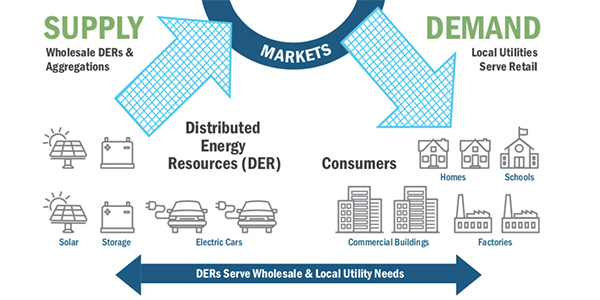New DER Market Design Approved
RENSSELAER, N.Y. — NYISO’s Management Committee on Wednesday approved proposed Tariff revisions that would create a path for aggregated distributed energy resources to participate in the ISO’s wholesale market.
James Pigeon, the ISO’s manager of distributed resource integration, presented the new construct, which would entail electrically mapping each individual DER facility to local transmission nodes to incent location-specific DER investment. It would also authorize entities to provide meter services to aggregations within the DER participation model and reliability-based demand response programs.
When the Business Issues Committee recommended the new design on April 17, several stakeholders expressed concerns about issues such as mitigation and the terms for dual participation, which would allow DERs that participate in the wholesale market to also provide services to another entity, such as a utility or host facility. (See NYISO Business Issues Committee Briefs: April 17, 2019.)
In response to those concerns, Pigeon offered a draft Tariff clarification on dual-participation DERs, with one phrase highlighted as new: “In accordance with ISO procedures, the ISO has the authority to determine schedules and/or dispatch for these resources.”
NYISO also agreed to stakeholder requests to add language to the FERC filing letter clarifying that the ISO is the ultimate authority over such dual-participation resources.
“A definition [of DER] is one thing stakeholders wanted, so we added that” as well, Pigeon said.
The Tariff would define a DER as a:
- Facility comprising two or more resource types behind a single point of interconnection with an injection limit of 20 MW or less; or
- Demand-side resource; or
- Generator with an injection limit of 20 MW or less.
All DERs must be electrically located in the New York Control Area and capable of responding in real time to NYISO dispatch instructions.
The state Public Service Commission earlier this month ruled on what constitutes appropriate compensation for the capacity value of distributed energy resources (VDER) (Case 15-E-0751; 15-E-0082). (See NYPSC Refines Value Stack, Boosts Community DG.)
SRE Penalty Provisions Delayed
The MC delayed considering a new external supplemental resource evaluation (SRE) penalty scheme to improve the ISO’s ability to call on external resources that have sold into its markets, mainly because of implementation concerns raised by the Market Monitoring Unit.
The changes would take effect in the third quarter, which led one stakeholder to ask whether NYISO will consider fast-tracking the measure, given its importance and complexity. Interim CEO Rob Fernandez, who said he pulled the item from the agenda, affirmed that the ISO would.
Under the new proposal, any external resource that fails to meet delivery criteria would be subject to the penalty, which is equal to 1.5 times the applicable spot price multiplied by the number of megawatts of shortfall and the percentage of the SRE call hours to which a supplier fails to respond.
External capacity suppliers would not be subject to the penalty if their failure to deliver is beyond their control. The ISO would calculate deficiencies monthly, using the total number of SRE call hours in a given month that the resource could be available and the total megawatt shortfall in that month.
— Michael Kuser




